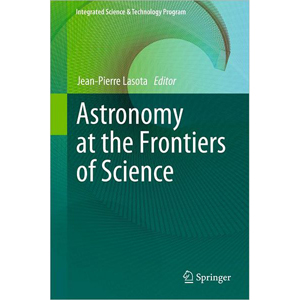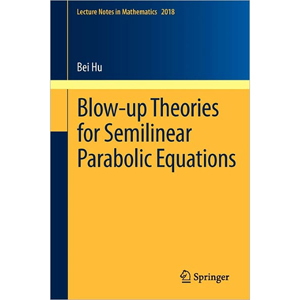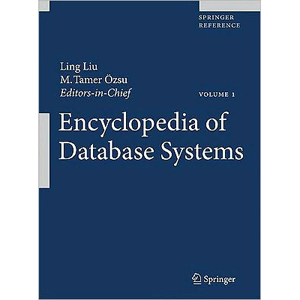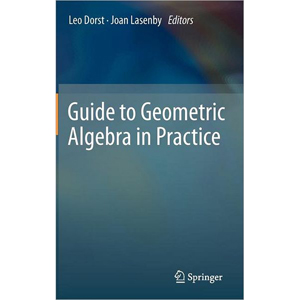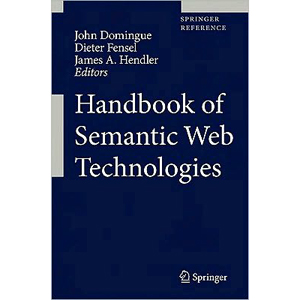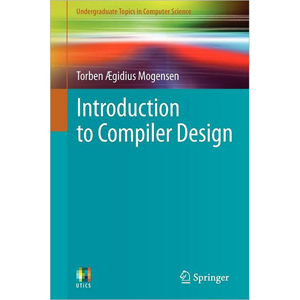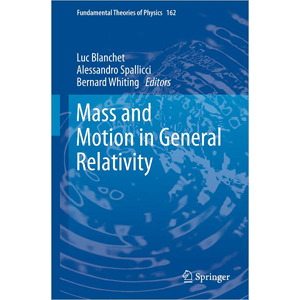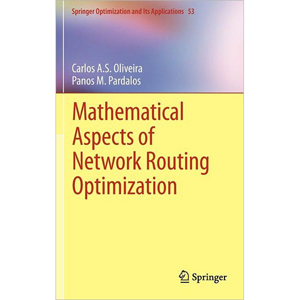12 new posts |  |
- Astronomy at the Frontiers of Science
- Blow-up Theories for Semilinear Parabolic Equations
- Encyclopedia of Database Systems
- Guide to Geometric Algebra in Practice
- Handbook of Semantic Web Technologies
- Introduction to Compiler Design
- Mass and Motion in General Relativity
- Mathematical Aspects of Network Routing Optimization
- Operators, Geometry and Quanta
- Quantum Phase Transitions in Cold Atoms and Low Temperature Solids
- Symmetry and the Standard Model
- Unified Signal Theory
| Astronomy at the Frontiers of Science Posted: 31 Oct 2011 09:20 AM PDT
Book DescriptionAstronomy is by nature an interdisciplinary activity: it involves mathematics, physics, chemistry and biology. Astronomers use (and often develop) the latest technology, the fastest computers and the most refined software. In this book twenty-two leading scientists from nine countries talk about how astronomy interacts with these other sciences. They describe modern instruments used in astronomy and the relations between astronomy and technology, industry, politics and philosophy. They also discuss what it means to be an astronomer, the history of astronomy, and the place of astronomy in society today. The book contains twenty chapters grouped in four parts:
This fascinating book will appeal to professionals in the fields of astronomy and physics, as well as space institutes, research agencies and the general public. Table of Contents Part 1: ASTRONOMY AND PHYSICS.
PART 2: ASTRONOMY IN SOCIETY.
PART 3: THE TOOLS OF OBSERVATION AND THE PROFESSION OF ASTRONOMER.
PART 4: ASTRONOMY AT THE FRONTIERS OF KNOWLEDGE.
Index. Book Details
Related Posts
|
| Blow-up Theories for Semilinear Parabolic Equations Posted: 31 Oct 2011 09:20 AM PDT
Book DescriptionThere is an enormous amount of work in the literature about the blow-up behavior of evolution equations. It is our intention to introduce the theory by emphasizing the methods while seeking to avoid massive technical computations. To reach this goal, we use the simplest equation to illustrate the methods; these methods very often apply to more general equations. Table of Contents
Book Details
Related Posts
|
| Encyclopedia of Database Systems Posted: 31 Oct 2011 09:20 AM PDT
Book DescriptionData have become a highly valued asset for governments, industries and individuals, and the management of these data collections remains a critical technical challenge.. The challenges of managing terabytes and exabytes of data and expanding data management to include other data modalities while maintaining the fundamental tenets of database management (data independence, data integrity, data consistency, etc) are important issues for any organization today. Published as five volumes with over 4000 pages, the Encyclopedia of Database Systems provides easy access to important concepts relevant information on all aspects of very large databases, data management, and database systems, including areas of current interest and research results of historical significance.. This comprehensive reference contains 1,300 illustrated entries, organized alphabetically. Each entry presents basic terminology, concepts, methods and algorithms, key results to date, references to the literature, and cross-references to other entries. Topics for the Encyclopedia — including areas of current interest as well as research results of historical significance — were selected by a distinguished international advisory board and written by world class experts in the field. Encyclopedia of Database Systems is designed to meet the needs of researchers, professors, graduate and undergraduate students in computer science and engineering. Industry professionals such as database specialists and software developers will also benefit from this reference work. Table of Contents
Book Details
|
| Guide to Geometric Algebra in Practice Posted: 31 Oct 2011 09:19 AM PDT
Book DescriptionGeometric algebra (GA), also known as Clifford algebra, is a powerful unifying framework for geometric computations that extends the classical techniques of linear algebra and vector calculus in a structural manner. Its benefits include cleaner computer-program solutions for known geometric computation tasks, and the ability to address increasingly more involved applications. This highly practical Guide to Geometric Algebra in Practice reviews algebraic techniques for geometrical problems in computer science and engineering, and the relationships between them. The topics covered range from powerful new theoretical developments, to successful applications, and the development of new software tools. Contributions are included from an international community of experts spanning a broad range of disciplines. Topics and features:
This comprehensive guide/reference is essential reading for researchers and professionals from a broad range of disciplines, including computer graphics and game design, robotics, computer vision, and signal processing. In addition, its instructional content and approach makes it suitable for course use and students who need to learn the value of GA techniques. Dr. Leo Dorst is Universitair Docent (tenured assistant professor) in the Faculty of Sciences, University of Amsterdam, The Netherlands. Dr. Joan Lasenby is University Senior Lecturer in the Engineering Department of Cambridge University, U.K. Book Details
|
| Handbook of Semantic Web Technologies Posted: 31 Oct 2011 09:19 AM PDT
Book DescriptionAfter years of mostly theoretical research, Semantic Web Technologies are now reaching out into application areas like bioinformatics, eCommerce, eGovernment, or Social Webs. Applications like genomic ontologies, semantic web services, automated catalogue alignment, ontology matching, or blogs and social networks are constantly increasing, often driven or at least backed up by companies like Google, Amazon, YouTube, Facebook, LinkedIn and others. The need to leverage the potential of combining information in a meaningful way in order to be able to benefit from the Web will create further demand for and interest in Semantic Web research. This movement, based on the growing maturity of related research results, necessitates a reliable reference source from which beginners to the field can draw a first basic knowledge of the main underlying technologies as well as state-of-the-art application areas. This handbook, put together by three leading authorities in the field, and supported by an advisory board of highly reputed researchers, fulfils exactly this need. It is the first dedicated reference work in this field, collecting contributions about both the technical foundations of the Semantic Web as well as their main usage in other scientific fields like life sciences, engineering, business, or education. Table of Contents
Book Details
|
| Introduction to Compiler Design Posted: 31 Oct 2011 09:19 AM PDT
Book DescriptionThis textbook is intended for an introductory course on Compiler Design, suitable for use in an undergraduate programme in computer science or related fields. Introduction to Compiler Design presents techniques for making realistic, though non-optimizing compilers for simple programming languages using methods that are close to those used in “real” compilers, albeit slightly simplified in places for presentation purposes. All phases required for translating a high-level language to machine language is covered, including lexing, parsing, intermediate-code generation, machine-code generation and register allocation. Interpretation is covered briefly. Aiming to be neutral with respect to implementation languages, algorithms are presented in pseudo-code rather than in any specific programming language, and suggestions for implementation in several different language flavors are in many cases given. The techniques are illustrated with examples and exercises. The author has taught Compiler Design at the University of Copenhagen for over a decade, and the book is based on material used in the undergraduate Compiler Design course there. Additional material for use with this book, including solutions to selected exercises, is available at http://www.diku.dk/~torbenm/ICD Table of Contents
Book Details
|
| Mass and Motion in General Relativity Posted: 31 Oct 2011 03:18 AM PDT
Book DescriptionFrom the infinitesimal scale of particle physics to the cosmic scale of the universe, research is concerned with the nature of mass. While there have been spectacular advances in physics during the past century, mass still remains a mysterious entity at the forefront of current research. Our current perspective on gravitation has arisen over millennia, through the contemplation of falling apples, lift thought experiments and notions of stars spiraling into black holes. In this volume, the world's leading scientists offer a multifaceted approach to mass by giving a concise and introductory presentation based on insights from their respective fields of research on gravity. The main theme is mass and its motion within general relativity and other theories of gravity, particularly for compact bodies. Within this framework, all articles are tied together coherently, covering post-Newtonian and related methods as well as the self-force approach to the analysis of motion in curved space-time, closing with an overview of the historical development and a snapshot on the actual state of the art. All contributions reflect the fundamental role of mass in physics, from issues related to Newton's laws, to the effect of self-force and radiation reaction within theories of gravitation, to the role of the Higgs boson in modern physics. High-precision measurements are described in detail, modified theories of gravity reproducing experimental data are investigated as alternatives to dark matter, and the fundamental problem of reconciling any theory of gravity with the physics of quantum fields is addressed. Auxiliary chapters set the framework for theoretical contributions within the broader context of experimental physics. The book is based upon the lectures of the CNRS School on Mass held in Orléans, France, in June 2008. All contributions have been anonymously refereed and, with the cooperation of the authors, revised by the editors to ensure overall consistency. Table of Contents
Book Details
|
| Mathematical Aspects of Network Routing Optimization Posted: 31 Oct 2011 03:18 AM PDT
Book DescriptionMathematical Aspects of Network Routing Optimization provides a thorough introduction to the subject of algorithms for network routing and focuses on multicast and wireless ad hoc systems. The modern world is connected through large-scale, computational networked systems such as the Internet and because of the ever-advancing technology of networking, efficient algorithms have become increasingly necessary to solve some of the problems developing in this area. This work focuses on computational issues arising from the process of optimizing network routes, such as the quality of resulting links and their reliability. Algorithms are key to understanding the protocols underlying multicast routing. The main objective in the text is to derive efficient algorithms, with or without the guarantee of approximation, that can be applied to address these problems. Notes have been provided for basic topics such as graph theory and linear programming to assist those who are not fully acquainted with the mathematical topics presented throughout the book. This book is designed for graduate students, researchers, and professionals interested in understanding the algorithmic and mathematical ideas behind routing in computer networks and network algorithms. Table of Contents
Book Details
|
| Operators, Geometry and Quanta Posted: 31 Oct 2011 03:18 AM PDT
Book DescriptionThis book gives a detailed and self-contained introduction into the theory of spectral functions, with an emphasis on their applications to quantum field theory. All methods are illustrated with applications to specific physical problems from the forefront of current research, such as finite-temperature field theory, D-branes, quantum solitons and noncommutativity. In the first part of the book, necessary background information on differential geometry and quantization, including less standard material, is collected. The second part of the book contains a detailed description of main spectral functions and methods of their calculation. In the third part, the theory is applied to several examples (D-branes, quantum solitons, anomalies, noncommutativity). This book addresses advanced graduate students and researchers in mathematical physics with basic knowledge of quantum field theory and differential geometry. The aim is to prepare readers to use spectral functions in their own research, in particular in relation to heat kernels and zeta functions. Table of Contents
Book Details
Related Posts
|
| Quantum Phase Transitions in Cold Atoms and Low Temperature Solids Posted: 31 Oct 2011 03:17 AM PDT
Book DescriptionThe primary focus of this thesis is to theoretically describe nanokelvin experiments in cold atomic gases, which offer the potential to revolutionize our understanding of strongly correlated many-body systems. The thesis attacks major challenges of the field: it proposes and analyzes experimental protocols to create new and interesting states of matter and introduces theoretical techniques to describe probes of these states. The phenomena considered include the fractional quantum Hall effect, spectroscopy of strongly correlated states, and quantum criticality, among others. The thesis also clarifies experiments on disordered quantum solids, which display a variety of exotic phenomena and are candidates to exhibit so-called “supersolidity.” It collects experimental results and constrains their interpretation through theoretical considerations. This Doctoral Thesis has been accepted by Cornell University, Ithaca, USA. Table of contents
Book Details
Related Posts
|
| Symmetry and the Standard Model Posted: 31 Oct 2011 03:17 AM PDT
Book DescriptionWhile elementary particle physics is an extraordinarily fascinating field, the huge amount of knowledge necessary to perform cutting-edge research poses a formidable challenge for students. The leap from the material contained in the standard graduate course sequence to the frontiers of M-theory, for example, is tremendous. To make substantial contributions to the field, students must first confront a long reading list of texts on quantum field theory, general relativity, gauge theory, particle interactions, conformal field theory, and string theory. Moreover, waves of new mathematics are required at each stage, spanning a broad set of topics including algebra, geometry, topology, and analysis. Symmetry and the Standard Model: Mathematics and Particle Physics, by Matthew Robinson, is the first volume of a series intended to teach math in a way that is catered to physicists. Following a brief review of classical physics at the undergraduate level and a preview of particle physics from an experimentalist’s perspective, the text systematically lays the mathematical groundwork for an algebraic understanding of the Standard Model of Particle Physics. It then concludes with an overview of the extensions of the previous ideas to physics beyond the Standard Model. The text is geared toward advanced undergraduate students and first-year graduate students.
Book Details
Related Posts
|
| Posted: 31 Oct 2011 02:48 AM PDT
Book DescriptionUnified Signal Theory is an indispensible textbook dealing with the theory of deterministic signals; a topic of fundamental interest to graduates and senior undergraduates in the areas of information engineering (telecommunications, control, systems theory and electronics), astronomy, oceanography, earth science, biology and medicine. The unified theory follows an innovative approach – that of combining all signal classes into just one. The fundamental signal operations (convolution, Fourier transform, linear systems, sampling and interpolation) are established simultaneously for all the signal classes. This unified approach avoids the repetition of similar concepts consequent on other approaches' separate treatment of definitions and properties for each signal class. Modern wavelet ideas are developed in harmony with the rest of the text. Unified Signal Theory provides:
The advantages of the unified approach are many: it permits a global vision of the topic, it is economical in teaching and learning, and it can be adjusted easily to fit new applications. This textbook presents the theory in five chapters, and goes on to demonstrate specific applications such as fast Fourier transform implementation, sampling and reconstructions of signals, multicarrier modulation systems, image scanning and tomography, in a further six chapters. Mathematical concepts are introduced conceptually within the body of the book with more rigorous treatment being reserved for the appendices. Book Details
Related Posts
|
| You are subscribed to email updates from Wow! eBook - Blog To stop receiving these emails, you may unsubscribe now. | Email delivery powered by Google |
| Google Inc., 20 West Kinzie, Chicago IL USA 60610 | |
READ MORE - 12 new posts

